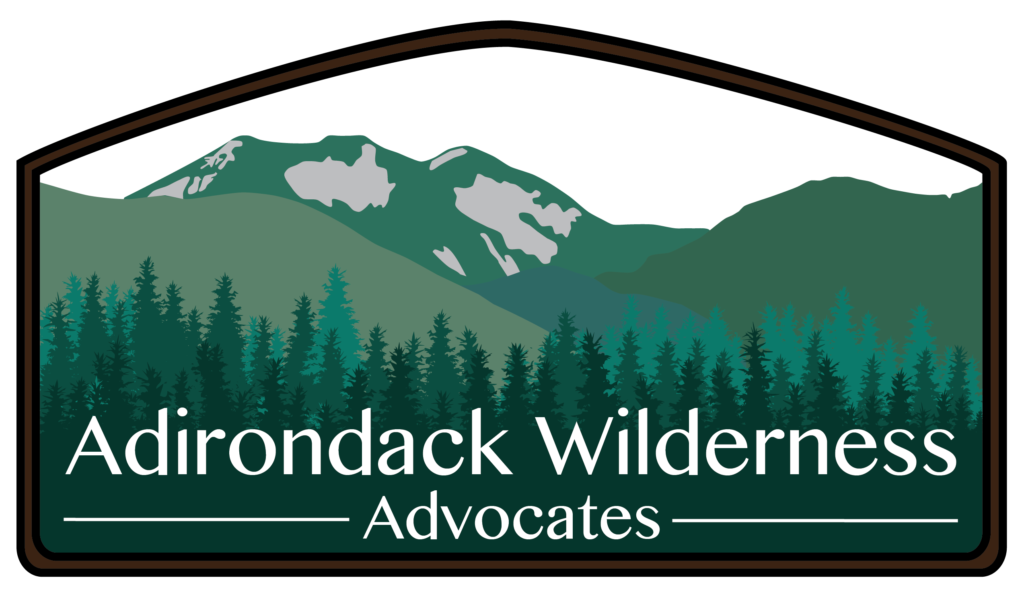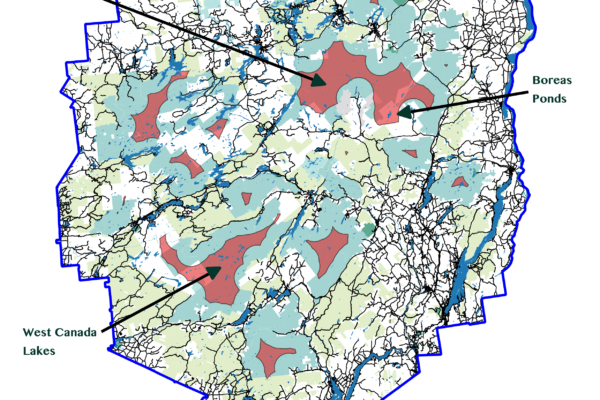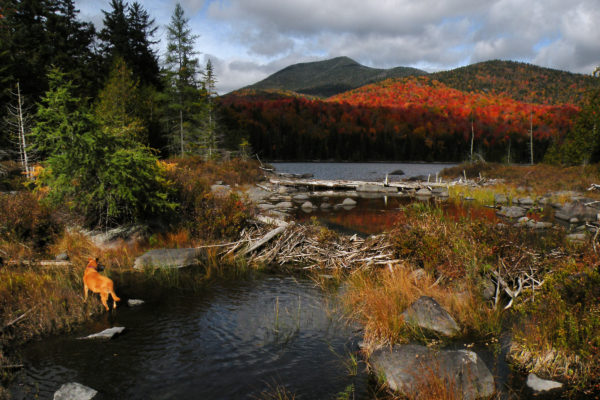On November 15th I will set off on a journey to keep the entire Boreas Ponds Tract wild, remote, and motor-free. With a backpack full of pro-Wilderness letters, I’ll hike continuously from Blue Ridge Road to Ray Brook, NY. It will be a day that I’ll never forget.
But I won’t be alone! The 1,500 letters that I’ll be carrying will give me 1,500 reasons to deliver our collective message to the Adirondack Park Agency Board of Commissioners, who will decide the fate of Adirondack wildness. I’ll also be joined along the way by other advocates who want to ensure that the intangible wildness currently found at Boreas Ponds is preserved as I walk the final 6 miles from the northern terminus of the Northville-Placid Trail.
Certainly these letters could be emailed to the Adirondack Park Agency. Surely there is an easier way to get to Ray Brook, NY. Traveling on foot through what remains of New York State’s wildest region to deliver the fervent pleas of Adirondack Wilderness Advocates from around the country (and the world) in less than 24 hours does prove a powerful point:
Anything other than a Full Wilderness classification for the Boreas Ponds Tract would shorten one’s motor-free and mechanized-free journey across what is currently a silent, remote landscape. If it’s already possible to walk from Blue Ridge Road to Ray Brook in 24 hours, isn’t Adirondack backcountry already a fragile idea? Is it not worth our best efforts to save?
Even though our message was resoundingly clear after the first public comment period – a vast majority (84% of the 11,200+ submitted comments) of people passionate enough to speak out on behalf of Boreas Ponds already asked for stronger Wilderness protections for this tract – I have five additional reasons that motivate me to act on behalf of a wild place that can’t speak for itself:
1) Less than 3% of the contiguous Lower 48 states are currently protected as motor-free Wilderness.
In only 410 years, we’ve lost 97% of our American primeval wildness. Only 1% of the United States east of Denver is protected as Wilderness. What we have in the Adirondack Park cannot be replicated elsewhere in the mostly-civilized and accessible Empire State. When something becomes rare, it increases in value, especially as wildlife habitat is continuously fractured worldwide. In the past two decades we have lost 10% of the world’s remaining wilderness. The Boreas Ponds Tract represents an opportunity not only to enhance our legacy of conservation in the Adirondacks, but an opportunity to differentiate ourselves from the rest of the ever-developing world.
2) The entire Boreas Ponds Tract sits inside one of the last remaining vestiges of wildness in the northeast.
Only 5% of the Adirondack Park is 3 or more miles away from a road, whereas 80% of the Adirondack Park is within 1 mile of a road or snowmobile trail. 6,970 miles of public roadway already dissect and fragment the Adirondack Park. In a road-robust world, we ought to measure what is gained and what is lost by opening mechanized access into the last quiet and wild spaces of New York State. How much more backcountry are we willing to sacrifice to create more ordinary front country?
3) The entire Boreas Ponds Tract contains New York’s largest, high-elevation wetland complex.
To take this a step further, value-1 wetlands, deserving our highest level of protection, occur in every corner of the tract. LaBier Flow is a value-1 wetland, Brant Brook is a value-1 wetland, Andrew Brook and Andrew Brook Tributary are value-1 wetland. Vulnerable 2,500ft+ elevation slopes and soils rated as “Severe Erosion Hazard” are also ubiquitous across the entire 20,758-acre tract. A full Wilderness classification would protect much more than the eponymous Ponds themselves!
4) The entire Boreas Ponds Tract is home to New York’s State’s iconic species.
Here you will find the beleaguered state fish of New York, the brook trout. Moose, martens, and black bears call it home. 5 waterfowl species and 9 boreal birds live here, including the threatened Bicknell’s thrush. 18 emergent and deep water marsh species can be found around the wetland complex, which also provides a resilient habitat in the face of climate change. In a Seussian spirit, these inhabitants need our collective voices.
5) Opportunities to allow nature to re-wild should be capitalized on.
Once a wild space is spent, much like time itself, we rarely have the chance to get it back. Boreas Ponds represents a once-in-a-lifetime opportunity to choose preservation over degradation, Wilderness over motorized access! As public lands are increasingly attacked nationally, New York has a chance to double-down on their heralded Wilderness legacy. Re-wilding is what the Adirondacks have done best since the creation of the Forest Preserve. The entire Boreas Ponds Tract is no different!
Make today a memorable day – the day you acted to preserve a rare Wilderness Area.
If it’s preserved, someday you can visit and proudly say that you helped #KeepBoreasWild.
If you’d like to see New York’s largest high-elevation wetland protected as a motor-free Wilderness, add you letter of support to my pack today!



